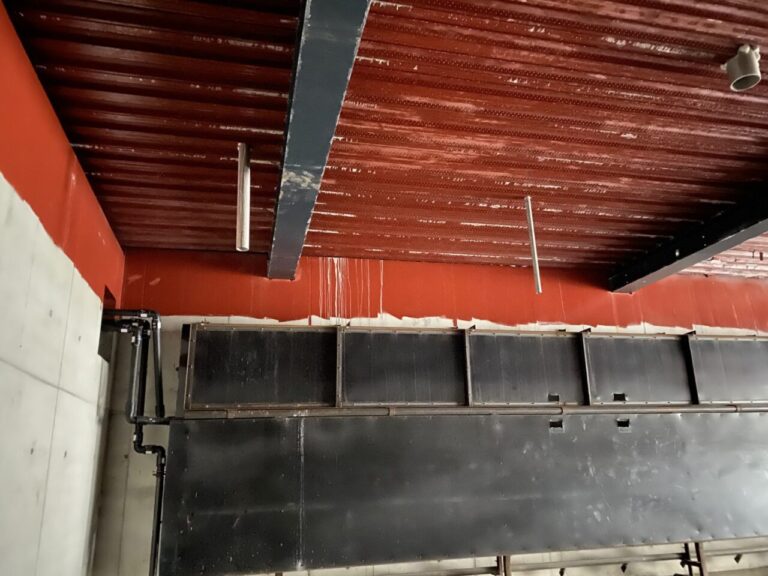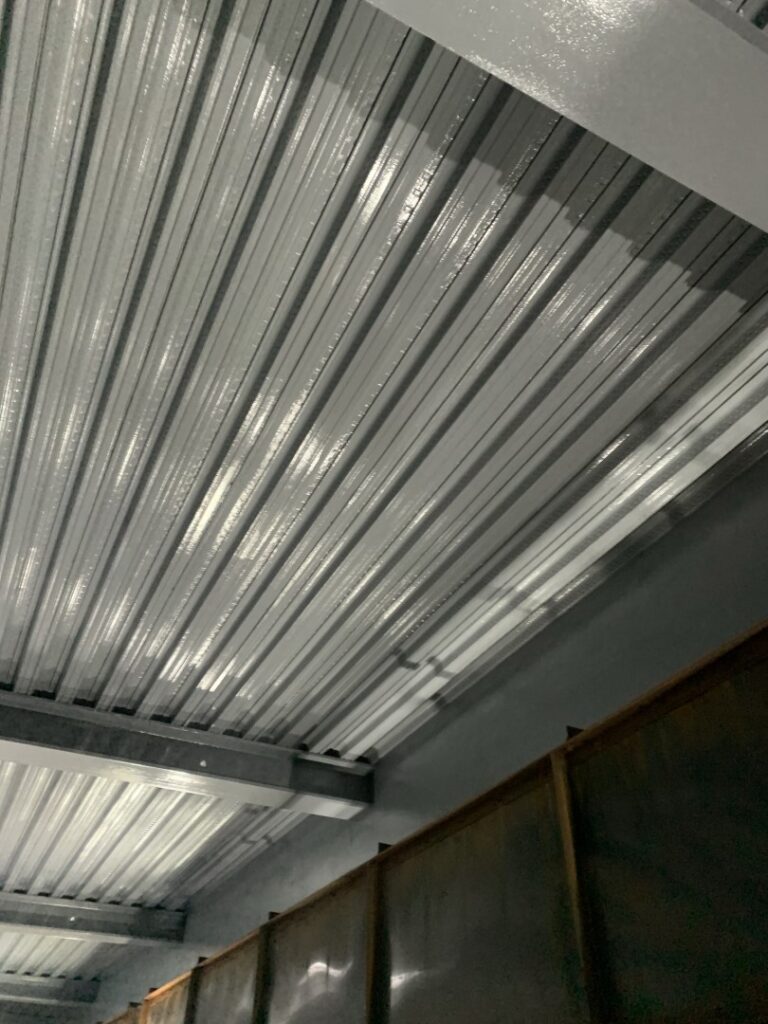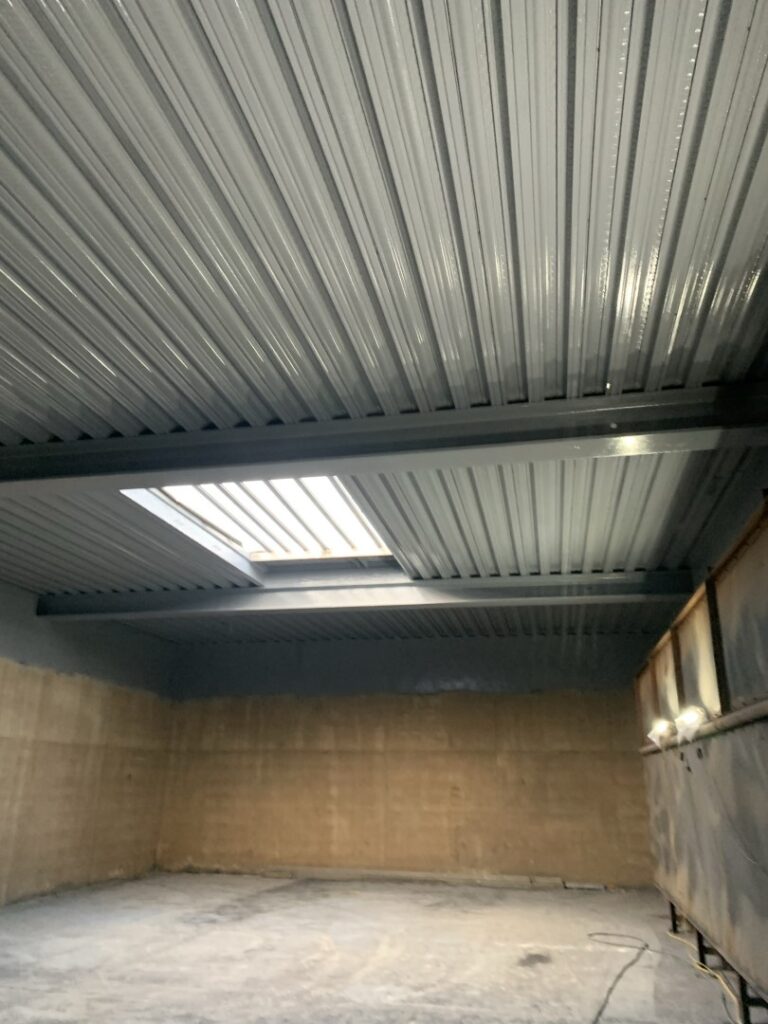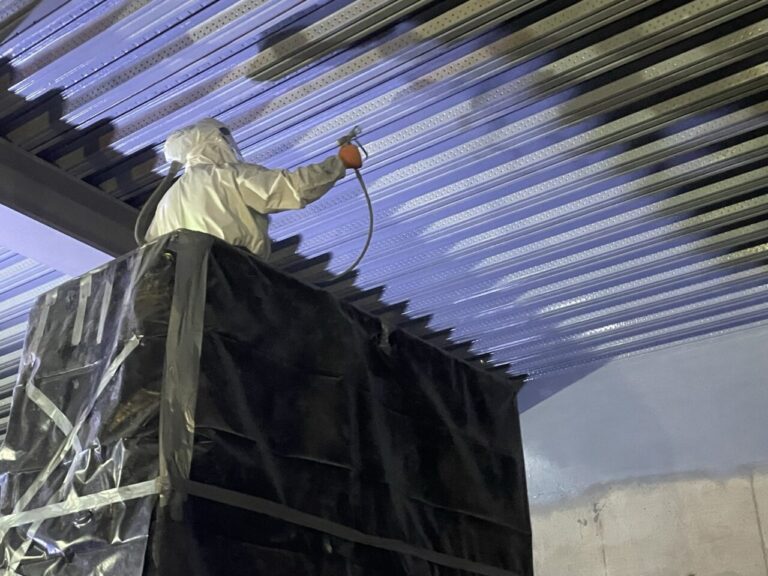THE PROBLEM
The existing tank lining had failed due to being applied without sufficient preparation and application in the incorrect climatic conditions. Galvanized steel must be thoroughly degreased and typically abrasive blasted prior to the application of epoxy tank linings.
This is one of the largest digesters we have ever worked on – over 5,400m2 in total.
SOLUTION
All of the existing coatings had to be removed to ensure adhesion of the new tank. This was undertaken by method of abrasive blasting, which both removed the failed tank lining and provided an excellent surface profile for the new epoxy tank lining to adhere to.
The surface profile was tested and recorded using a surface profile needle gauge. Dehumidification was introduced to prevent corrosion from occurring.
The concrete walls in the gas space were also prepared by method of abrasive blasting. This revealed that the previous epoxy tank lining had been applied of laitance – concrete fines which come to the surface during pokering. This was poorly adhered and when removed exposed lots of blow holes in the concrete.
To make good the concrete surface a cementitious fairing coat was applied by method of trowel. When applying tank linings to concrete this is an essential and often overlooked stage in the tank lining process. It is not possible to fill blow holes with paint alone. A fillet detail was also installed
All prepared surfaces were then washed with clean water with the addition of Denso Holdtight to prevent flash rusting from occurring, whilst also ensuring all surfaces to be coated were free from soluble salts and dust contamination which would be detrimental to the adhesion of the new tank lining.
As part of our standard tank lining quality assurance soluble salt testing was undertaken to verify that the levels present were within the manufacturers recommendations. Dust tape tests were also conducted to verify that all surfaces to be coated were sufficiently clean.
The concrete elements of the tank were moisture tested to ensure compliance with the tank lining manufacturers recommendations.
The unusual construction of this digester presented a challenge as it was not practical to apply a separate stripe coat – as effectively this was the whole surface. Instead the decision was taken to apply a full additional coat as the cost of additional material was less than the labour cost to apply a undertake a vast amount of stripe coating.
The steel supporting beams were treated with an anti corrosive primer in the form of Chemco RL500PF applied by method of airless spray to a thickness of 100 microns.
Remers Epoxy Universal epoxy tank lining was then applied in three coats at a consumption of 0.4Kg per coat. Remmers Epoxy Universal has extensive case histories in Anaerobic Digester linings and we have used this material in over 50 tank linings of this type.
As part of our standard tank lining quality assurance the epoxy lining was checked for porosity using a DC holiday spark tester and any pin holes marked and rectified using the same material.
Finally due to the unusual construction of this Anaerobic Digester there were numerous voids and seams that were too large to seal using the epoxy tank lining. These were then sealed using Remmers PU AW polyurethane sealant which is designed and approved for use in an Anaerobic Digester environment.












